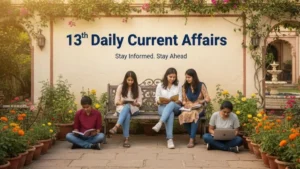Dear Readers,
Reasoning is a game of wits and presence of mind! Yes, it is true and it might seem as the greatest of the challenge after English Section’s surprises but yet this one can easily be dealt with. You just need correct practice and hardwire your brain to quickly make decisions of what to attempt and what to leave. And for same we are providing you questions of Reasoning Question and Answers. Solve these to Practice latest pattern reasoning question for bank exams.
Directions (1-5): Study the information and answer the given questions:
Ten people are sitting in two parallel rows containing five people each in such a way that there is an equal distance between adjacent persons. In row 1 – A, B, C, D, and E are seated (but not necessarily in the same order) and all of them are facing south. In row 2 – P, Q, R, S and T are seated (but not necessarily in the same order) and all of them are facing north. Therefore, in the given seating arrangement, each member seated in a row faces another member of the other row. All of them like different colour viz. Cream, Yellow, White, Pink, Red, Blue, Green, Orange, Violet, and Black but not necessarily in the same order.
A sits third to left of one who likes Yellow. Either A or one who likes Yellow sits on the extreme end of the row. Immediate neighbor of A faces T who likes Red. Only one person sits between T and Q who likes Pink. Q does not sit any extreme end of the row. E likes Cream and faces Q. Immediate neighbor of Q faces the person who likes White. There are two persons sit between B and the one who likes White. R likes Violet and faces B. Immediate neighbor of C faces the person who likes Black. Immediate neighbor of Q does not face the person who likes Blue. P likes Green.
A sits third to left of one who likes Yellow. Either A or one who likes Yellow sits on the extreme end of the row. Immediate neighbor of A faces T who likes Red. Only one person sits between T and Q who likes Pink. Q does not sit any extreme end of the row. E likes Cream and faces Q. Immediate neighbor of Q faces the person who likes White. There are two persons sit between B and the one who likes White. R likes Violet and faces B. Immediate neighbor of C faces the person who likes Black. Immediate neighbor of Q does not face the person who likes Blue. P likes Green.
Q1.Who sits diagonally opposite to B?
(a) Q
(b) P
(c) S
(d) T
(e) R
Q2.Who among following likes Orange?
(a) E
(b) D
(c) C
(d) B
(e) A
Q3. D faces which of the following person?
(a) S
(b) R
(c) Q
(d) P
(e) None of these.
Q4. If A is related to black and B is related to violet, then in the same way C is related to?
(a) Yellow
(b) Orange
(c) White
(d) Cream
(e) Red
Q5. A likes which of the following colour?
(a) Green
(b) Yellow
(c) Orange
(d) White
(e) Blue
Directions (6-10): Study the following information carefully and answer the questions given below:
There are eight persons A, B, C, D, E, F, G and H are sitting around a square table in such a way that four of them sit at the four corners of the square table while other four sit in the middle of each of four sides. The one who sits at the four corners face the center and those who sit in the middle of the sides face outward.
A faces opposite to center of table. Two persons sit between A and G. Only one person between G and C. F sits second to right of B. F does not neighbor of A and C. D sits second to right of H. E does not sit adjacent to C and B.
Q6.Who among following sits diagonally opposite to H?
(a) E
(b) A
(c) B
(d) G
(e) F
Q7. Who among following sits opposite to F?
(a) G
(b) E
(c) C
(d) B
(e) A
Q8. Who among following sits second to right of F?
(a) A
(b) E
(c) C
(d) B
(e) G
Q9. Four of the following five are alike in a certain way and hence they form a group. Which one of the following does not belong to that group?
(a) A
(b) H
(c) B
(d) E
(e) F
Q10. Who among following sits immediate left of C?
(a) E
(b) B
(c) F
(d) A
(e) H
Directions (11-15): In these questions, relationship between different elements is show in the statements. The statements are followed by conclusion.
Give answer.
(a) if only conclusion I is true
(b) if only conclusion II is true
(c) if either conclusion I or II is true
(d) if neither conclusion I nor II is true
(e) if both conclusion I and II are true
Q11. Statements: F ≥ G = H; G > J ≥ K
Conclusions:
I. F ≥ K
II. K < H
Q12. Statements: P < Q = R ≥ S ≥ T
Conclusions:
I. T ≤ Q
II. R > P
Q13. Statements: A ≤ B < C; A ≥ D; C ≤ F
Conclusions:
I. D < C
II. F ≥ D
Q14. Statements: U > A = I ≤ O < E
Conclusions:
I. I ≤ E
II. O > U
Q15. Statements: L = M ≥ N; M > P; L < K
Conclusions:
I. K > P
II. N < K
You May also like to Read:





 13th January, 2026 Current Affairs (Dail...
13th January, 2026 Current Affairs (Dail...
 Daily Current Affairs Quiz 13th January,...
Daily Current Affairs Quiz 13th January,...
 NIACL Assistant Syllabus and Exam Patter...
NIACL Assistant Syllabus and Exam Patter...








